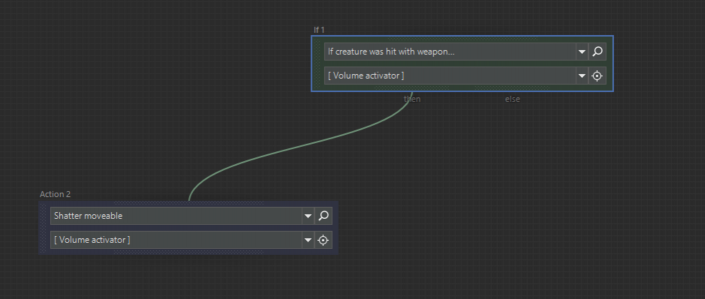
Node Editor is a scripting graphical user interface which is supposed to be aimed at beginners with little to no programming knowledge. It is a similar concept to Unreal Engine’s blueprints or Unity’s visual scripting interface.
The benefit of Node editor is it was constructed similarly to TRNG’s trigger window since each of the nodes is like a TRNG flipeffect trigger but the main difference is that many nodes can be spawned in the same event set and connected to each other (more on that later) which can do a lot of stuff at the same time, pretty cool right? All in all, an EventSet and the nodes you put in it are equivalent to TRNG’s TriggerGroups and the triggers you put in it.
Node editor was released in Tomb Editor 1.6 and works for TEN versions 1.0.2 and Tomb Editor 1.6 and up. If you use Tomb editor 1.5.9 and TEN 1.0.1 or below, you will need to update, the latest version can be found HERE.
There are several advantages and disadvantages to using node editor:
Advantages:
- It’s quick to implement something very easy without written Lua.
- Very little programming is needed.
- Everyone can implement nodes (link to guide in the initial post) but you need Lua knowledge.
- At the time of writing, there are a lot of action/conditional nodes provided.
Disadvantages
- You can’t use it to program complex gameplay and complex effects (written Lua required).
- Can get messy if you have a lot of action nodes and don’t “simplify”.
- You cannot do looping (only action and conditional nodes).
However, despite the disadvantages, the beginner-friendliness and easy-to-use node editor still allow for making cool events and such!